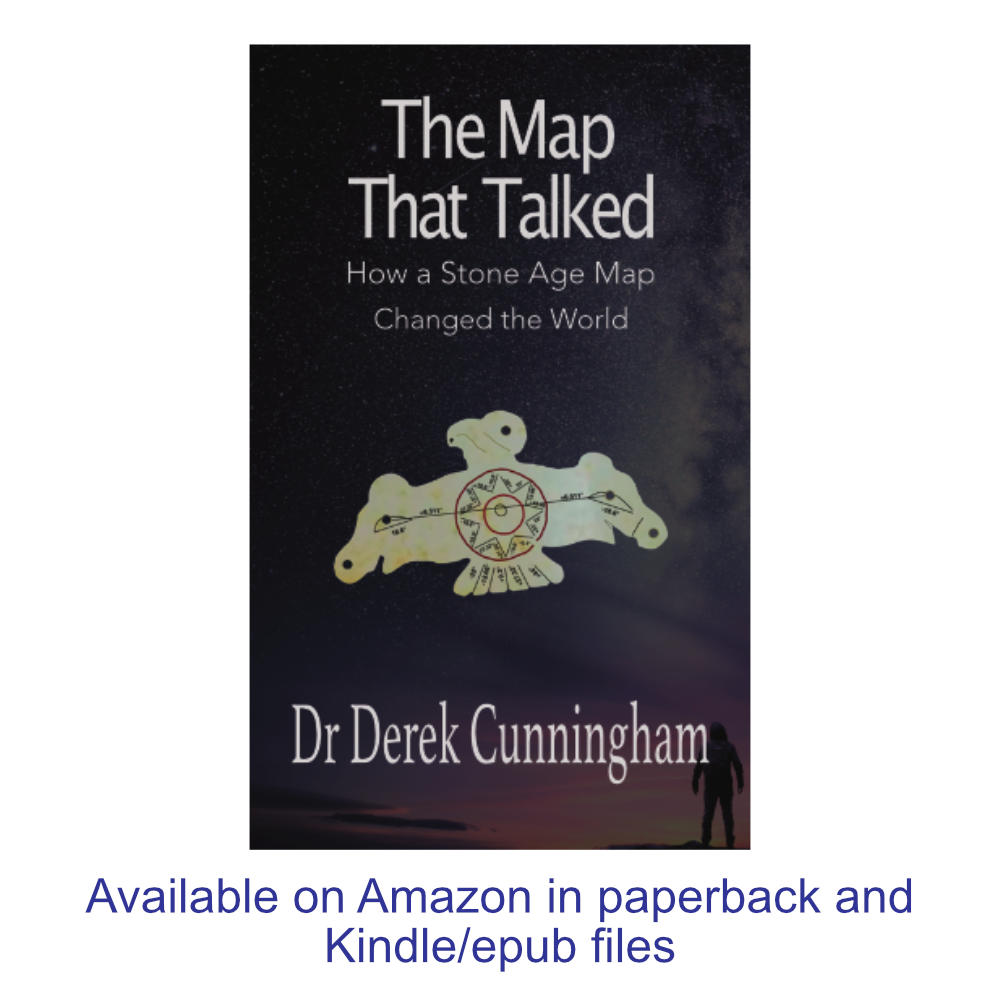Author Derek Cunningham
Abstract – One major question surrounding Stonehenge is the reason for the wooden posts that encircle the central stone circles. Why are they not perfect circles? What were they used for? And why were they left to rot and disappear? In this study it is determined that the location for the wooden posts are consistent with the orbits of the planets Mercury, Venus, Earth, Mars and Saturn. Only Jupiter is missing from the list, with the location drawn by the orbit of Jupiter indicating that another circle of wooden posts might exist at about 50 meters from the centre of Stonehenge.
Author: Derek Cunningham
Introduction
Concerning the theory that Stonehenge might be linked to the motion of the planets the English Heritage website simply states1
Although people today gather at Stonehenge at the spring and autumn equinoxes to watch the sunrise, archaeo-astronomers think it unlikely that the equinoxes meant anything to prehistoric people. The stars and visible planets may also have been important to people in prehistory, but it is impossible to know any beliefs relating to them.
The fact is it is not possible to assign the layout of the stone circles at Stonehenge to the orbits of the planets. Though Michael W. Saunders, who was an electronics engineer, has argued that the orbits of the planets are reflected in the diameters of the stone circles2, specifically he argued that the large Sarsen circle represented the orbit of Earth, Venus was represented by the Bluestone circle, Mercury by the Bluestone Horseshoe, and finally the sun by the Trilithon horseshoe, the fact is the orbits of the planets are not consistent with these diameters. In addition the various circles differ substantially in their structure, and in their heights and also in their shapes, yet these problems did not seem to generate any alarm bells within the mind of Mr Saunders.
But what happens if the general theory is correct and “Stonehenge” did once mark the orbits of the planets?
Here the argument revolves around the theory that the wrong circles have traditionally been selected. Specifically, the problem is, today, only the Stone Circles remain, and because they are the most impressive, they usually attract all the interest by amateur historians.
Within recent studies it is now known that the Stonehenge we know today is the result of several construction phases, and also countless incomplete and incorrect rebuilds. In fact, perhaps the only true part remaining of Stonehenge is the parts that can no longer be seen.
The first era in Stonehenge’s long history, which began circa 5,000 years ago, involved the creation of the seldom discussed Earthwork and a series of wooden-post circles. In this early stage there were no stone circles. Then, about 2,500 years ago, the stone circles were installed, but over time some of these stones were moved and perhaps ultimately pulled down. Thus, the current circle that we now see and photograph is actually a recent rebuild, which might not be entirely accurate.
For example, there are pictures from 19013, which show engineers restoring the tallest stones to what they believed were the original positions; and from within the public notes that can be found in the English Heritage website1, it is also recorded that
“In 1952, after securing the backing of a wealthy financier, [a Mr R S Newal] wrote again to the Ministry of Works enquiring about the possibility and the costs of [restoring the Stonehenge site]”.
In the 1950s the Ministry had adopted a policy of leaving Stonehenge alone. It took the firm view that any [further] restoration would alter its then well-known ruined appearance and that it might be difficult to ascertain the exact original positions of all the stones. Moreover, it pointed out that restoration would be ‘a formidably large undertaking.”
The denied request by Mr Newal was then followed by a miuch stronger request that was made by Atkinson, Piggott and Stone, who together wrote a report for the Society of Antiquaries. In their letter they asked for the restoration of the entire trilithon, and they enveloped their letter with a request that they should do the repairs in order to enhance the value of the monument for the student2. After taking some time to think about the various issues, and with the promise of needed money to complete the project, the authorities in charge of Stonehenge finally relented, and between 1958 to 1959 a large engineering project was undertaken to restore the site. It was this restoration that resulted in the circle that we now see.
But what remains hidden is the old wooden circles, which were not touched during these restorations, and it is these hidden circles that now create a very simple test.
In the following video I found that if the known orbits of the planets from Mercury to the planet Saturn were scaled and placed over Stonehenge, such that the exact orbit of Saturn is placed over the outermost posts that were uncovered by chance in 1966 during construction work at the old carpark (this carpark is circa 270 meters distant from the center of Stonehenge); then, either through coincidence or by someone’s careful planned design, all the inner planets then generate orbits that overlap with the known positions of the other inner wood circles. These being the hidden Aubrey X and Y circles with the orbit of the inner planet, Mercury, overlapping the location of the mysterious Stonehenge Q-holes.
In terms of probability statistics, with four orbits matching within the confines of the Stonehenge Earthwork (which has a diameter of circa 55 metres) and one orbit matching at a distance of circa 270 metres, if we divide the entire Stonehenge Park region into 27 ten-metre wide tori (donut-shape circles), each equally spaced in radius, this creates a probability that is equal to 27C4 that that the observed overlaps are just because of chance.
Calculation out the combination equation, 27C4, this is equivalent to a probability of only 1 in 80,730, which equates to a probability p-value of .00001. This is far below the .05 level that is normally used to mark in statistics to determine if a result is statistically significant.
From this, it can thus be argued that it is more reasonable to argue the posts were placed at there current positions to mark the orbits of the planets, than it is to argue the posts were placed there randomly.
But what about the orbit of Jupiter? At this moment there are no known posts at circa 150 metres from the center of Stonehenge. This might be considered a problem. However, their current absence of any posts at this distance could be used to confirm the theory.
Because there are no posts are known in this area, it should not be too difficult to carry out some preliminary digs, to determine if any buried posts do exist within this region.
If they do exist, then the ability for this theory to predict this result would provide strong support for the underlying model, and it would also argue the builders did know the orbits of the planets.
If no posts are found, the result could then be used to argued that the overlap is just a very intriguing coincidence.
There is, however, another important reason for wanting to know if there are posts at circa 150 metres from the center of Stonehenge.
If there are posts at this specific distance (and they create a distorted circle that marks the orbit of Jupiter), this would confirm the builders of Stonehenge, 5,000 years ago, understood basic trigonometry and mathematics. This is because a knowledge of trigonometry would be required to calculate the planetary distances using the parallax method; and this discovery would also help support the related theory, which is the same builders could write using an archaic geometric texts, in which the angles of the lines were designed to match astronomical values. Amongst the five primary angles one value is argued to be the angle of the moon’s orbital plane, which is set at an angle of 5.1 degrees.
Here it can be argued that without a knowledge of basic mathematics and trigonometry, it would be impossible for people in this era to know that the moon’s orbital plane is offset by 5.1 degrees to Earth’s orbital plane with the sun.
As can be seen, further work is required.
References
- https://www.english-heritage.org.uk/visit/places/stonehenge/history-and-stories/understanding-stonehenge/
- Michael W. Saunders, Stonehenge Planetarium (1979)
- https://www.wiltshirelive.co.uk/news/history/gallery/newly-discovered-photos-show-stonehenge-7629905
- https://www.english-heritage.org.uk/visit/inspire-me/blog/blog-posts/excavation-restoration-stonehenge-1950s-60s/
- Derek Cunningham, The Babel Text (2018)




